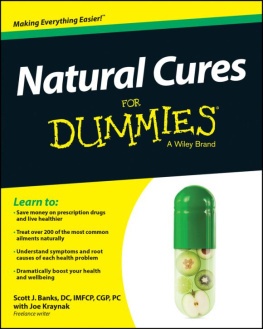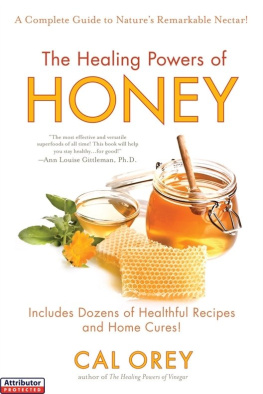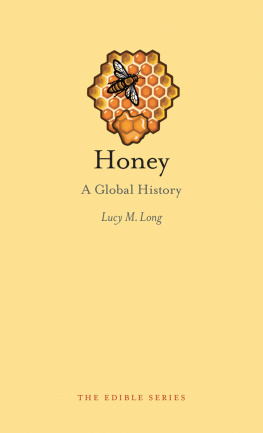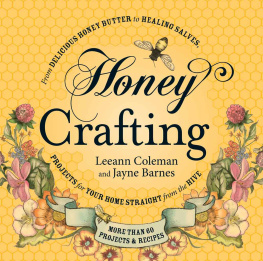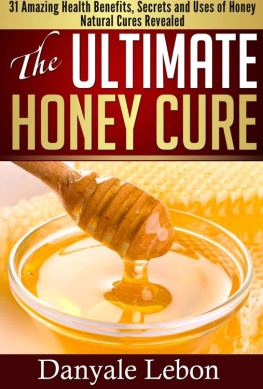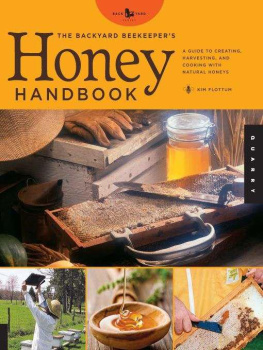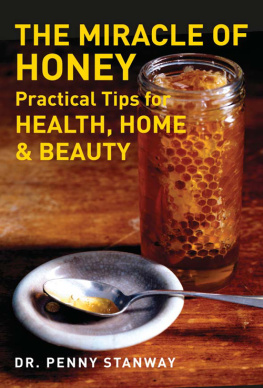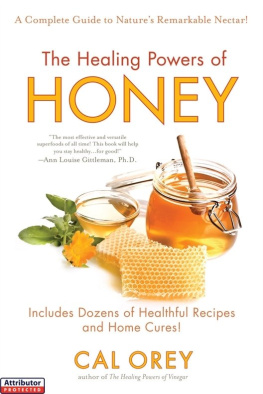The Ultimate Honey Cure
31 Amazing Health Benefits, Secrets and Uses of Honey Natural Cures Revealed
Table Of Contents
Introduction
I want to thank you and congratulate you for downloading the book, The Ultimate Honey Cure: 31 Amazing Health Benefits, Secrets and Uses of Honey Natural Cures Revealed .
This book contains proven steps and strategies on how to use the natural health benefits of honey to treat common personal health issues and concerns.
What makes honey so special is that it has been used for thousands of years to provide health, beauty and wellness benefits. As a result, it has a proven track record of its effectiveness! Join me in discovering the secrets of honey and how you can use it to your advantage today!
Thanks again for downloading this book, I hope you enjoy it!
Chapter 1 - All About Honey
Honey is a completely natural food. It is actually the only food that does not spoil. It is one of the ancient foods that remained unchanged in terms of production. Honey depends on bees for production.
What honey contains
Typically, honey is composed of natural sugars and minerals. It contains phosphates, calcium, iron, magnesium potassium and sodium chloride. The percentages vary among the different varietals of honey. Some honey varieties have additional compounds, depending on what they were made of. On an average, honey contains 80% natural sugars in the following forms:
Honey has high fructose content, in addition to the other forms of sugar. This is why honey is sweeter than refined sugars and other sweeteners. It also does have higher calorie content.
Other components include:
- Pollen, protein, minerals and vitamins: 2%
Water content is desirably at less than 18%. Honey has better quality if there is less water in it.
Vitamins and other nutrient contents are mainly based on where the nectar came from. On the average, honey contains riboflavin, niacin, thiamin, vitamin B6 and pantothenic acid. It also contains some amino acids. Mineral content includes iron, copper, calcium, phosphorus, manganese, magnesium, sodium, zinc and potassium. A few experts measure the mineral content through the conductivity of the honey. Higher conductivities mean higher mineral contents. Manuka honey, for example, contains 4 times more minerals than most honeys because it is 4 times higher than the average honey in terms of conductivity.
Honey is also slightly acidic, with pH range of 3.2 to 4.5. This property is responsible for the antibacterial action of honey. By promoting an acidic environment, honey can help in killing bacteria. It also contains antioxidants that help clear the body of toxins and free radicals.
Another good news is that honey is fat-free and cholesterol-free.
How honey is made
Honey is made by bees in their hives. The process starts with the collection of nectars from flowers by the worker bees. The collected nectars are placed in honeycombs. The bees fan it with their wings in order to evaporate most of the water in the nectar. They also add enzymes to aid in honey production. In the process, the natural sugars in the nectar are also broken down into simple forms. As the water evaporates, the remaining liquid turns thicker and the sugar becomes concentrated, turning it into a thick and sweet liquid. When about 17% of the water content is removed, the bees seal the cells of the honeycomb with beeswax. Over time, chemical reactions and more evaporation take place, turning the liquid into honey.
The color and flavor of the honey largely depends on the type of flower where the nectar came from. Honey blends occur naturally, as the bees collect honey from all kinds of flowers. This happens often when the beehive is close to an area with different types of flowers growing nearby. Specific flavors are obtained when the bees are limited to collecting nectar from particular flowers. For example, the beehive is located in the middle of a field of sunflowers, without any other kind of flower nearby. The bees would be producing sunflower honey, pure and unblended.
Honey Varieties
Honey flavors and colors vary, depending on the flower. For example, honey made from the nectar of Orange Blossom has a light amber color. Honey made from the nectar of wildflowers or avocado flower has a deeper, darker amber color. In the United States alone, there are over 300 different and distinct honey flavors, made from the nectar of different flowers.
Amber is the most popular color of honey. However, the color actually ranges from colorless to dark brown. The flavors also vary from mild to bold. Generally, lighter honey colors have milder tastes and darker-colored ones have a much bolder flavor.
Some of the more common and popular honey varieties available include the following:
Acacia honey
This comes from the nectar of the acacia trees flowers. This honey has a very pale color. Pure acacia honey resembles the appearance of liquid glass. The flavor is floral, mild and sweet. This is one of the popular honey flavors. This is because it does not give an overpowering flavor and sweetness when mixed with beverages or when used in cooking.
Alfalfa honey
The United States and Canada extensively produce alfalfa honey. It comes from the nectar of the purple blooms of the alfalfa plant. Alfalfa honey has a light amber color. The aroma and flavor are pleasantly mild.
Avocado honey
This honey is produced from the blooms of California avocado. It has a dark amber color. The taste is rich and buttery.
Blueberry honey
This is derived from the blueberry bush. It has the typical light amber color. The flavor is full and well rounded. This is commonly produced in Michigan and New England.
Buckwheat honey
This is made from buckwheat and produced in Wisconsin, Ohio, New York, Minnesota, Pennsylvania and Eastern Canada. This honey variety has more antioxidants compared to some of the lighter-colored honey varieties. Buckwheat honey has a dark color with a full-bodied flavor.
Clover honey
This is one of the most abundant honey varieties produced in the United States. The nectar comes from the blossoms of the clover plant family such as Alsike clover, red clover, and sweet clovers (both white and yellow varieties). Clover honey has a pleasant and mild taste. The color varies, depending on where and what type of clover the nectar came from. It is available in colors ranging from water white, light amber to amber.
Eucalyptus honey
Eucalyptus honey comes from the large Eucalyptus genera, which is composed of more than 500 unique species. Because of the vastness in diversity among the Eucalyptus family, the honey made from it is also wide ranging. The colors and flavor widely differ. One thing common is that eucalyptus honey has a strong flavor, with a hint of a medicinal smell. Eucalyptus honey is largely produced in California.
Fireweed honey
The honey is made from the nectar of the fireweed plant. This plant is a perennial herb that grows in the open woods of Canada, and in the Pacific and Northern states. The plant grows up to 3-5 feet high and bears pink flowers. Fireweed honey has a light color.
Manuka honey
Manuka honey is one of the most preferred variation as natural remedy. This is used internally and topically for various ailments. It is mainly produced in New Zealand, where the manuka plant is indigenous. Manuka honey is considered as one of the most organic honey in the world because the plant grows in uncultivated areas in New Zealand, far away from pollution and chemical contaminants.
Next page


